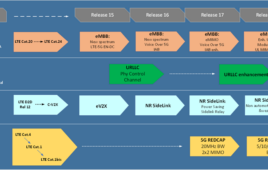According to research firm IDC the worldwide mobile phone market continued to show signs of improvement during the second quarter of 2010, but it’s not entirely due to the biggest and the best. While Samsung and Motorola may have turned in strong second quarter earnings, IDC says the growth was driven primarily by smartphone vendors and companies outside the top five leaders worldwide.
According to IDC’s Worldwide Quarterly Mobile Phone Tracker report mobile phone vendors shipped a total of 317.5 million units during 2Q10, up 14.5 percent from the 277.2 million units shipped during the second quarter of 2009.
According to IDC, Nokia again took top honors in mobile phone shipments, with 111 million units shipped in the second quarter. Nokia was followed by Samsung, which shipped 68.3 million, followed by LG, RIM and Sony Ericsson. When taken together, the top five OEMs shipped 227.7 million units, leaving the remaining 89.8 million or 28.3 percent to those in the “Others” category.
“That worldwide growth was driven primarily by vendors outside the top vendors is particularly noteworthy,” said Ramon Llamas, senior research analyst with IDC’s Mobile Devices Technology and Trends team, in a statement.
Llamas notes that while RIM, Apple, and HTC have clearly benefited from increasing demand and interest in smarpthones, “it’s also the companies with a presence among entry-level handsets and mid-range devices, which have long been the domain of the worldwide leaders.”
Kevin Restivo, senior research analyst with IDC’s Worldwide Mobile Phone Tracker program, said some traditional mobile phone makers and brand owners, such as ZTE, have gained share due to higher volumes of lower-cost models, which are increasingly popular with wireless service providers.
In the United States, smartphones were again a hit, with the highly the anticipated launches of Apple’s iPhone 4, HTC’s Droid Incredible and the EVO 4G all taking place in the first half of 2010. While these captured headlines and mindshare, IDC says other vendors began seeding the market for what was to come later this year, including Samsung’s Galaxy S, Motorola’s Droid X, and several handsets from Dell.




